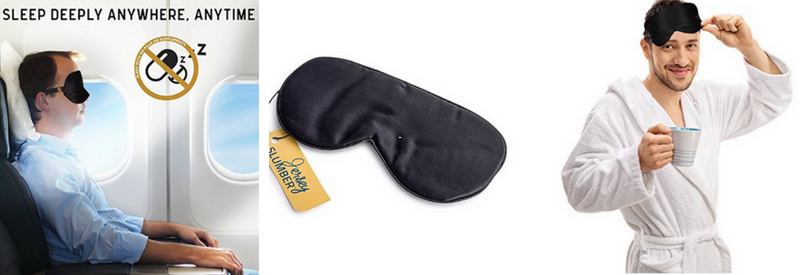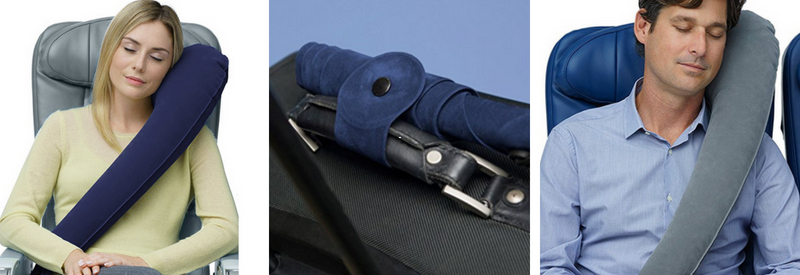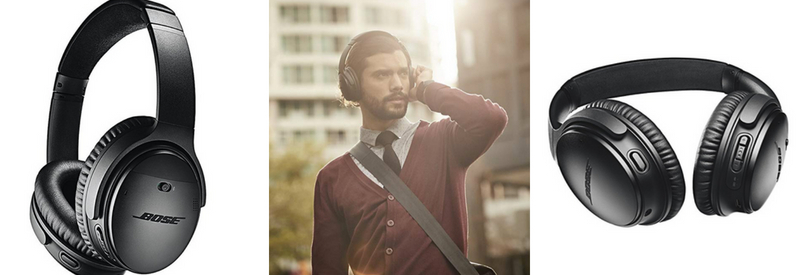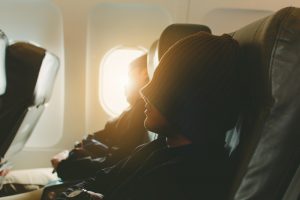Getting a good night's rest on a flight is no easy feat. Even at maximum recline, there’s no escaping the fact that you are still very much upright. Seats are thin and flimsy. There are few places to properly rest your head. Someone is always turning on a light. And it turns out being hurled into the wind at 550 mph inside an aluminum tube makes for a noisy ride.
Short of anesthesia, how can anyone really be expected to sleep through all this? It's hard, but not impossible. Here's what you can do.
Sitting in the Good Seats
There's a reason why those cushy biz class seats cost as much as they do. Still, no need to part with several thousand dollars just for a shot at a quality night's rest. When it comes to turbulence, overwing Economy seats actually have an advantage over pricey seats up front. That’s because the center of the plane is much more stable than the front and back where you’ll feel every little shake.
Parents and families traveling with small children are often seated in the bulkheads, so flyers sensitive to crying toddlers may want to avoid this area. The same goes for seats near high traffic areas such as lavatories.
Opinions vary when it comes to the window vs. aisle debate but, if sleep is the objective, the window does have a slight upper hand in providing a wall to lean against. And unlike that aisle seat, no one is going to politely tap you awake when they need to get out and go to the toilet.
Sleep Masks
Sitting under the glare of the reading light can sometimes feel like a film noir interrogation. Even if yours is switched off, your neighbor may prefer to read late into the night. If so, you'll be glad to have a sleep mask handy to block out the light. Many carriers hand these out on long hauls for free, but it's worth splurging on your own.
Lightweight silk versions are popular, as are masks with blackout cavities that don't press against lashes.

Get Comfy
When confining yourself to a tiny little sliver of a seat for half the day, it's a good idea to dress for the occasion. That doesn't necessarily mean gym clothes, but you'll certainly be more comfortable in them.
On a recent flight from Oslo to Los Angeles, I hurriedly slipped on a pair of itchy winter wool pants. Fine for walking through snowy cold Norway, absolute torture to sit in for 11 sleepless hours. Stick to loose fitting breathable garments in natural fibers and you'll rest much easier.
Cooler temperatures are more conducive to deeper sleep, which is why cabins are often so cold. Keep cozy with a light sweater or a small blanket. You might want to pass on the blanket provided by the airline, as those aren't as sanitary as the plastic wrapping might lead you to believe. Amazon has a good selection of easily packable blankets to carry on.
Also provided by the airline, those gauzy little pillows are probably great for sopping up spills, but terrible at propping up heads. Again, bring your own. Neck pillows are made to suit all preferences, from those that wrap around the neck to some that angle across the upper body.

Put Down the Booze
A little glass of wine won't kill you, no, but at 35,000 feet alcohol is not your friend. Not only will you feel the effects of alcohol faster and more intensely than on the ground, but you may become dehydrated more easily. Plus, it's hard to sleep peacefully when you have to wake up to run to the toilet throughout the night. What you need is water, and plenty of it.
Dealing with Noise
If the white noise of flying doesn't lull you right to sleep as it does for some, a good pair of noise cancelling headphones can really save the day. True, many amenity kits include earplugs, but those won't do much good if your seatmate happens to be a crying toddler.
Be aware that noise levels will differ by aircraft. The Airbus A380 offers the quietest ride in terms of noise reduction, though some complain that cabin chatter is much more noticeable without the usual gentle hum to drown it out.

Sleeping Aids
Pills and potions can work wonders though they may not be for everyone. Not all require a prescription, though it's always best to consult your physician before trying any sleeping aid.
Ambien is a prescription sedative with a dicey reputation for blackouts among some users. In my own experience, I’ve only ever slept very deeply and it’s been a lifesaver on many long flights.
Over-the-counter pills like Dramamine or Tylenol Simply Sleep will also do the trick. Just be sure to wait until your flight is safely in the air before taking anything. There are horror stories of flyers who popped pills after pulling out from the gate, only to have their flight turn right back. It’s no fun sorting out a canceled flight while in a haze of Dramamine.
For that reason, some may prefer a more natural solution like kava, lavender oil, or melatonin. Melatonin supplements are often taken to help ease jetlag and regulate sleep/wake cycles. If you find it difficult to sleep on long flights, taking melatonin could help you relax, and adjust your sleep patterns once you arrive.

Above image by CC7 via Shutterstock






